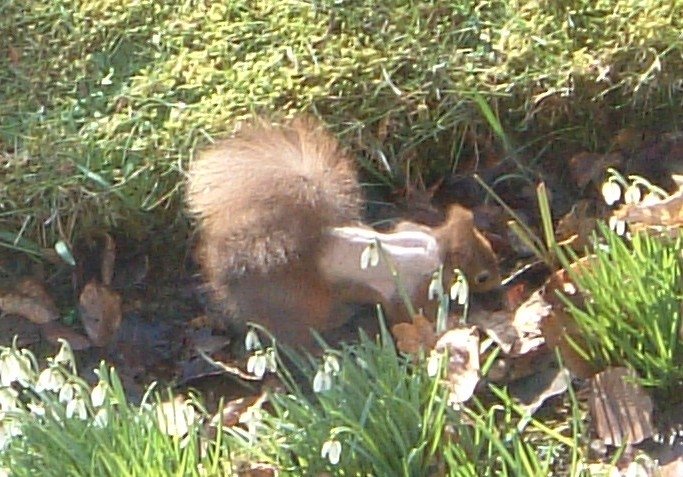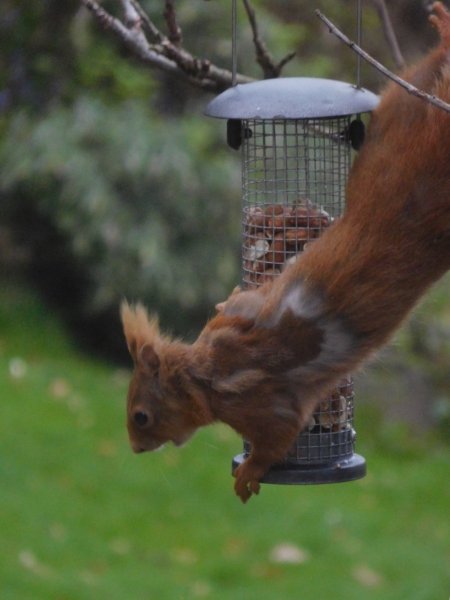Original Author: Mel Tonkin
Why are some squirrels losing so much hair in the spring that parts of them are completely bald? Every year in April to May we get a flurry of queries relating to red squirrels that have lost large parts of their coat, leaving large areas of their body totally hairless. Often it looks like the squirrel has taken off a jacket to reveal nothing underneath.
If the squirrel has inflammation or lesions in the exposed skin, there is clearly an issue of disease, skin parasites – for example, mange – or allergy. However, this does not often appear to be the case. Because these squirrels are usually observed at people’s garden feeders, we are often presented with clear images that show a complete absence of any other symptoms. The squirrels themselves seem perky, and are usually observed to go on to grow their summer coat normally. Typically red squirrels moult their winter coats in May-June, with their summer coats already coming in before the winter fur is lost.

What seems to be happening is that something is disrupting the moult sequence. Back in the 1980s, when I was doing capture-mark-recapture studies of wild red squirrels, I was able follow a couple of dozen individuals through two full years of coat-changes: none of them ever showed this tendency to moult the winter coat too early, and I’d never heard of anyone else making this observation of balding squirrels – and I was someone who had read almost everything that had ever been published on red squirrels worldwide at the time.
Or are we seeing an artefact of feeding non-wild foodstuffs at bird feeders or squirrel-feeders?

We do not know the answer. The fact that this tends to happen in spring, often while there are still fiercely cold spells, seems not to bother these squirrels, although one must assume that energy loss, due to the extra effort of keeping warm, must have some impact.
Whatever the impact, these squirrels usually carry on their lives unimpeded and keep appearing at feeders without obvious detriment.
This picture, kindly donated by one of our observers in Alyth this spring, clearly shows the new summer coat growing in as a darker red and shorter hair starting to cover the naked area left by the loss of longer, denser and greyer winter hair.
One final note: there are diseases that can spread between birds and mammals at feeders, and mouldy peanuts, for example, can develop toxins. Feeders should be emptied of old food periodically and scrubbed (just as you would wash up dirty plates before using them again). If you suspect disease in any of the visitors to the food you put out, then there are “bird-safe and pet-safe” disinfectants that can be used to safely improve the hygienic conditions for your wild guests.
